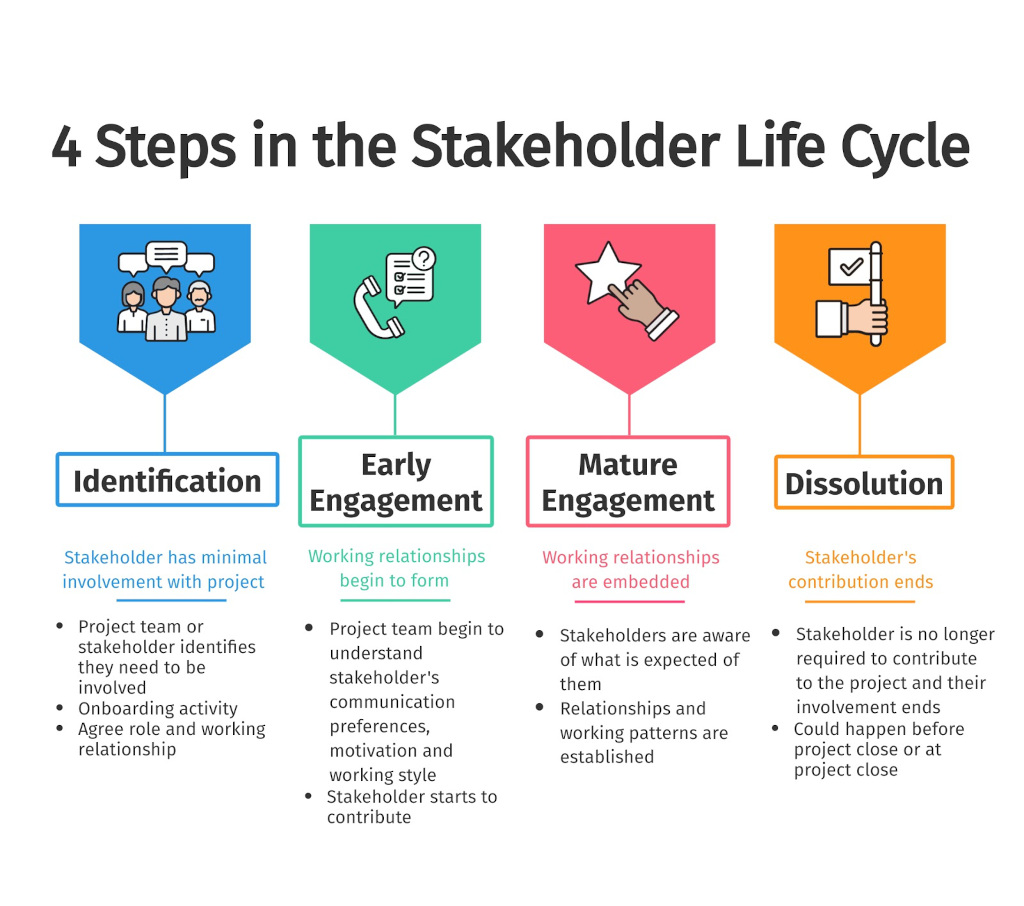
Project onboarding can significantly impact the success (or failure) of your project.
Let me show you how.
So your boss hands you a new project to run and mentions that some people are already lined up to help get it done. Great, you think. You call the first one on the list, but they don’t really know anything about the project beyond the fact they’ve been ‘volunteered’ by their team leader.
This is where you switch into onboarding mode.
As a project manager, one of the first things to do is get the project team together. You need to build a team that has a common goal and that knows how the work is going to get done. That doesn’t happen overnight but you can certainly influence the speed (and willingness) of people to get involved with your project if you introduce them to the work in a structured way.
In this article, I’ll share my top tips for onboarding new people to a project team. I’ll also draw on the experience of other practicing project managers who have shared their stories so you can quickly get your projects off the ground with a team that knows what to do. To jump to a specific section click the link below.
- The stakeholder life cycle
- Project onboarding: Getting the team engaged
- Project onboarding: why the project is important
- Project onboarding: Build long-lasting, positive relationships
- Using checklists for project onboarding
- Project onboarding: Next steps
Alternatively, just keep scrolling.
The stakeholder life cycle

Project managers think about projects as having a life cycle. The project kicks off, the work is done, the project is closed. The involvement of people within a project follows a similar journey: they are stakeholders.
What’s a stakeholder?
PMI defines a stakeholder as:
“An individual, group, or organization that may affect, be affected by, or perceive itself to be affected by a decision, activity, or outcome of a project, program, or portfolio.”
Stakeholders include: Your project team members who are involved with the day-to-day running of the project;
subject matter experts whom you call on from time to time to contribute a bit of expertise; end-users; customers; any other group that is going to be impacted by what you are doing (or thinks they will be).
Stakeholders matter because ultimately, projects are about people. You can have the best processes in the world, but if people don’t like the change you are delivering, and you can’t win them around, then you’re wasting your time.
Azadeh Rezvani and Pouria Khosravi looked at 27 different academic studies on what makes a project a success and guess what? It wasn’t risk management or the right project management software that made a difference. They found stakeholder satisfaction and communication came out top. Care about the people, and your chances of project success shoot way up.
Project onboarding: Getting the team engaged

Let’s get back to the journey people go through when they get involved with your project. You start out not knowing who they are, you bring them into the project and involve them, then their involvement in the project comes to an end (even if they continue to be involved with the deliverable or change outside of the project).
There are four stages of involvement:
- Identification: Where you work out who needs to be involved.
- Early engagement: Where they start contributing to the project.
- Mature engagement: Where they work well within the team and know what to do.
- Dissolution: Where they leave the project team as their involvement has come to an end.
All of these fall into the project management processes of stakeholder management. In this article we’re talking about onboarding new people into the project team, so that particular part of the journey falls into the “identification stage” and a bit of the “early engagement stage”, as well as you, start working together.
Reaching out to new team members
The first thing to do with your new project is to surround yourself with the people who can help you get it done.
You might already have a good idea of who that is, or you might have to ask around to identify who has the skills you need. And you might not even know yet that you need certain skills – that’s OK, you don’t have to onboard everyone on Day 1. As you learn more about the project and what’s involved, you can bring new people into the team.
You might get lucky and have people reaching out to you to be involved. Welcome these enthusiastic people with open arms!
Inviting people to join the team is normally as easy as a quick phone call with them or their manager. Give a quick summary of the project and what you’re trying to achieve. Secure some of their time to contribute to the project work. If the project has the backing of management, hopefully, they’ll realize the importance of your work and are available to support you.
Pro Tip: Not all projects are priority projects, and sometimes subject matter experts are supporting multiple initiatives. You might need to convince team leaders to ‘give up’ their staff. Follow whatever channels you have for resource allocation within the organization so you approach people in an appropriate way.
Project onboarding: Explain why the project is important

Now you’ve identified your new team member and secured some of their time in principle, it’s time to explain what this project is all about.
“For me, the thing that is so often forgotten is making sure that people know how they fit into the project and why, and how everyone else fits and what each person brings,”(…)“Too often project people jump straight into goal setting but, especially so virtually, this works much better if we already have some common ground, trust, and rapport.” – Dr. Penny Pullan, Making Projects Work.
Schedule a 30-minute call with the new team member to explain the background for the project. Understanding the ‘why’ brings clarity, engagement, and strategic alignment: all essential things if you want to get the team pulling in the same direction.
Explain the goals
Next, share the project’s goals and objectives with them. If you have a business case or project charter, send that to them for background reading. Have a chat about what the project is supposed to achieve and how you think you’re going to get there.
“For me, it’s pulling together a presentation which covers off some of the detail within the project charter: why we’re doing the project, how I see them being involved and high-level timelines,”(…) “Depending on the project and size would sometimes alter the content to make it more specific to them.” – Andrew Callow, a senior change leader in the gaming industry.
Even if you are tailoring your induction chat, the team may still have questions. Let them ask away – this is the time for them to get clarity.
Set expectations
Next, set expectations for what the project expects from the team and explain how they are going to help deliver on goals.
That could include:
- Contributing to project planning, for example, using a Work Breakdown Structure template to plan out their own work;
- Helping to identify risks and resolve issues;
- Completing certain tasks by agreed dates;
- Reporting progress to you;
- Completing timesheets regularly;
- Working with others in the team as required.
Let people know about time off and holidays so they can plan around absence. It’s helpful to have a roles and responsibilities document that outlines what each person is taking ownership of. Share those around so everyone knows what everyone else is doing.
Set expectations with senior leaders
Project managers have to work with people at all levels of the organization. You’ll want to use different approaches to onboarding people who are higher up the organization chart than you.
Tony Proctor from The PMO Roadmap has some tips:
“For management and up, I recommend asking them what their expectations are for the project and how familiar they are with the project,” he says. “This approach has a lot of benefits: the leadership stakeholders don’t have much time so getting them to speak is a win, letting them express their expectations is a win, identifying quickly what they know about the project and being able to gauge their experience is priceless.”
This is a great technique for saving time, too.
“Project managers ‘almost’ always will have more data, process, and information than any executive ever wants,” (…) “Let them speak, keep it simple and lead them to your answers you want with open-ended questions.” – Tony Proctor, The PMO Roadmap
Project onboarding: Build long-lasting, positive relationships

There are also expectations around employee culture and how the team works together.
Jaspal Kaur-Griffin,Head of Programs Management at the Bar Standards Board, says she takes new team members out for coffee.
“I explain the culture of the organization and especially tell them I am always available if they have questions. I can support them throughout the process,” (…)“Most importantly I tell them how happy we are to have them on board as we go through a rigorous screening and interview process so the very fact that they are here is tantamount to how good they are and how much we want them here!” – Jaspal Kaur-Griffin, Bar Standards Board
Could you do something similar to make newbies feel welcome?
Introduce newbies to everyone
Project work is teamwork. Whatever it is that this new starter is going to contribute to the team, chances are they’re doing it because someone else needs what they are going to produce. Whether that’s the legal terms and conditions that the web team needs to put up on a new site or some code that then gets passed to the testing team to check, getting a project successfully completed relies on everyone doing their bit.
Make that easy for your newbie by introducing them to the rest of the gang. Send them the invites to your regular team calls. Get them on the collaboration tool. Pop their phone number on the team contacts directory.
Make the connections between team members. This helps because they’ll then know who to talk to for work stuff, and also because belonging is a fundamental human need. And it’s nice to have friends at work.
Invest in team relationships
You’ve told the team what the project is about and what’s expected from their contribution, but this relationship works both ways. You also need to consider how you, as the project manager, can be easy to work with.
Learn what you can about their communication preferences and how they work. For example, do they prefer phone calls or Slack messages? Do they like long, detailed explanations or do they get fidgety when you talk for more than a minute? Can you book time in their calendar directly or do you need to go via their Exec Assistant?
You can’t influence anyone if you can’t see things from their point of view. At this point, you’re finding out more about the environment they operate in, what matters to them and what motivates them.
Not everyone is going to feel positive about the project
I’ll admit it: up until this point, I’ve assumed people will be willing to work on the project but in reality that’s sometimes not the case. Some project stakeholders will be reluctant to get hands-on with the project work. This can happen for lots of reasons including:
- They’ve got lots of stuff on already and your work is just extra noise;
- They genuinely don’t have time;
- They don’t have the skills and were ‘volunteered’ because no one else in their team was available;
- They think the project is a bad idea and shouldn’t be happening.
There’s no such thing as a difficult stakeholder – just challenging situations created by stakeholders. Unsupportive stakeholders will need you to spend more time with them to uncover their motivations and fully understand the sociopolitical context of their interactions with the project.
Once you understand and can resolve some of that, you should find the situation gets easier to deal with. Supportive stakeholders will embrace the opportunity to work with you and be on board with the project.
Make a good impression
Onboarding a new project team member is often the beginning of your relationship with this person. The more projects you run in the organization, the more likely it is that you’ve worked with them before, but often the nature of projects means you are meeting lots of new colleagues.
This is the time to be making a good impression. You’ll be stuck with them for some time – until the project completes, probably. So, don’t waste your opportunity to come across as professional, credible, and trustworthy.
Even if you’ve worked with people before, still think about how you come across in those first few interactions about this new project. You want them to think that you’ve got a grip on the work and that they can trust you to lead the project successfully through to delivery… even if you are feeling like you haven’t got a clue what’s going to happen.
Pro Tip: Projects are like bread. In the beginning, it looks like nothing is going to come together and that you’ll never get a decent result. But keep kneading, turning, blending, and ultimately that feeling goes away because you get a beautiful mixture that you know has every chance of turning out wonderfully once it’s baked.
Feeling overwhelmed at the beginning of a project is (unfortunately) normal! The beginning of the project is often hugely unsettling, changeable, and the context is constantly evolving. You’re not 100% clear on what you are supposed to be doing and everyone is in Tuckman’s Forming stage as the team comes together for the first time.
Hang in there, in a couple of weeks and you’ll be talking as if you have everything under control – because you will.
Using checklists for project onboarding
Every person is different, but the onboarding process is similar for each new stakeholder joining the project. So similar, in fact, that the easiest way to make sure you don’t miss anything is to use a checklist.
Process Street is a great way of documenting your onboarding process so it becomes something repeatable. Each new team member – whenever they start contributing to the project – gets the same information and experience. And you don’t have to think about what to tell them as it’s all there for you.
If you’re unfamiliar with Process Street, check out their explainer video below:
Process Street is great for people that want to get projects done. Most project teams have between 6 and 10 people, so it’s important to make the experience of working on your project as easy as possible for them. Set them up for success with a strong onboarding process so they can quickly see what a difference they are making and how they are contributing because a strong team can deal with pretty much any issue that comes up later in the project.
Check out this webinar for a more in-depth look at what you can do with Process Street, or dive into the Getting Started with Process Street knowledge base.
Useful templates for project management
- Writing a Proposal: Step-by-Step Guide
- Project Proposal Template Checklist
- Project Management Process Checklist
- Product Launch Checklist
- Project Manager Meeting Planner Checklist
Project onboarding: Next steps
The goal of all this initial onboarding activity is to get to a point where the team can fully contribute to the project and help you achieve its goals. The team is aware of what’s expected of them and their responsibilities to the project. They know about the project’s goals, working patterns, expectations, and rhythms.
Hopefully, they will quickly be fully contributing to the project. Be sure to go through the process again with any new individuals joining the team.
If you’re still struggling to get people on board with your project, take a leaf out of Jill Poyton’s book.
“I have found that a plate of homemade bread pudding has been a great bonding experience over the first tea break of a workshop!”(…) “Interestingly, the fact that I have homemade the bread pudding the night before seems to make a difference. I think it makes the stakeholders feel cared for.” -<ahref=”https://www.linkedin.com/in/jill-poyton-b9758732/?originalSubdomain=uk”> Jill Poyton
P.S. Don’t forget to subscribe to the Process Street blog to get notified of our upcoming articles. We also have a podcast “Tech Out Loud” featuring content written by respected industry leaders such as Peep Laja, Sujan Patel, Tomasz Tunguz, and more!
What is your project onboarding strategy? How do you onboard people into your project team? Let us know in the comments below.
This is a guest post by Elizabeth Harrin, who runs the GirlsGuideToPM blog. She’s an author and mentor who loves demystifying project management, cats, and growing vegetables.







 Workflows
Workflows Projects
Projects Data Sets
Data Sets Forms
Forms Pages
Pages Automations
Automations Analytics
Analytics Apps
Apps Integrations
Integrations
 Property management
Property management
 Human resources
Human resources
 Customer management
Customer management
 Information technology
Information technology



Molly Stovold
Hey, I'm Molly, Junior Content Writer at Process Street with a First-Class Honors Degree in Development Studies & Spanish. I love writing so much that I also have my own blog where I write about everything that interests me; from traveling solo to mindful living. Check it out at mollystovold.com.